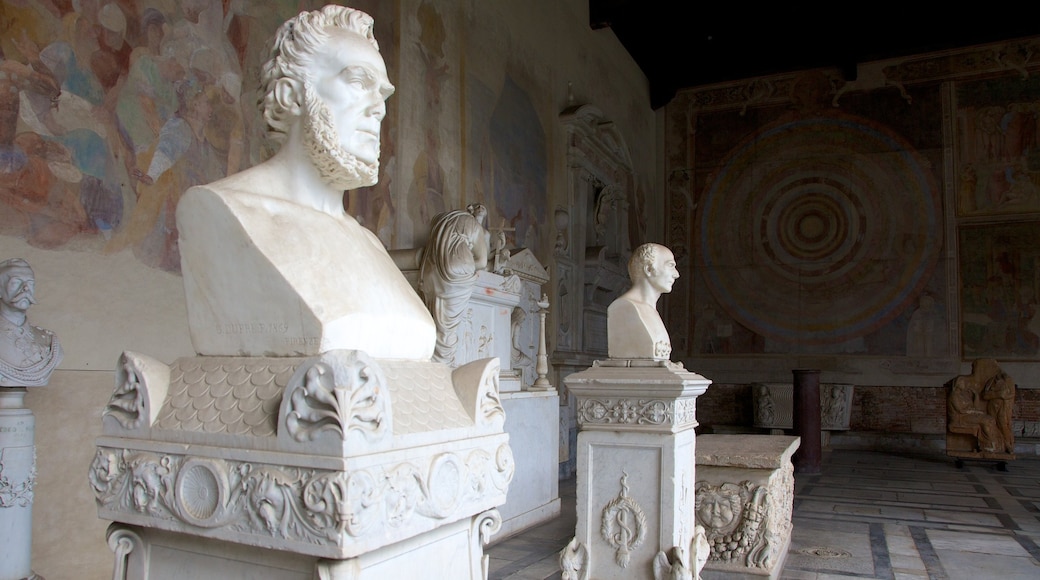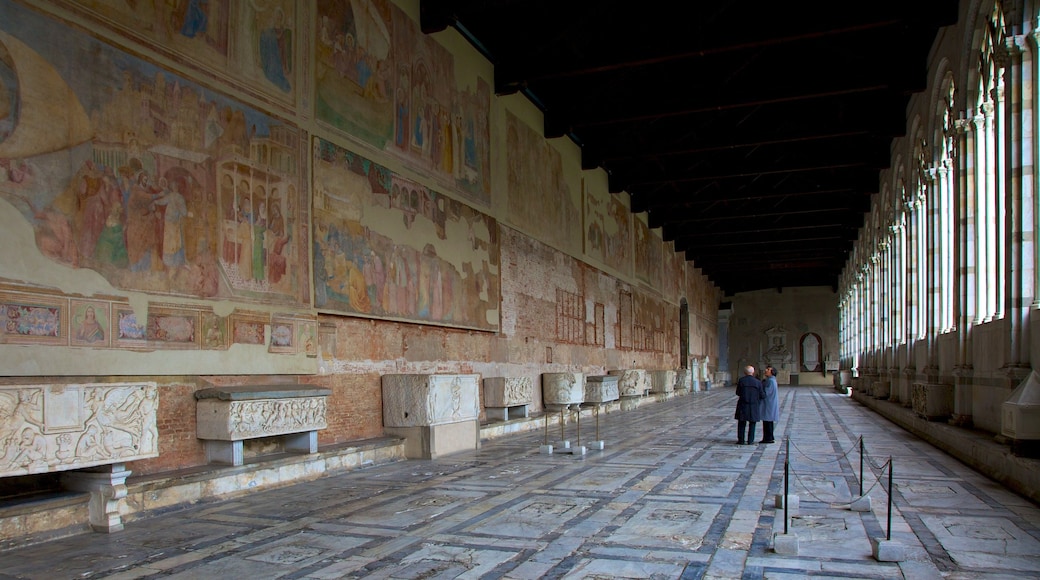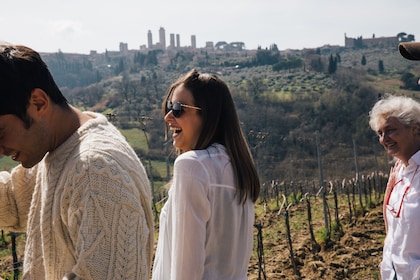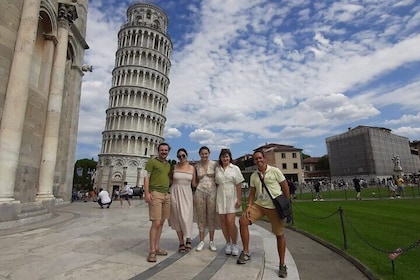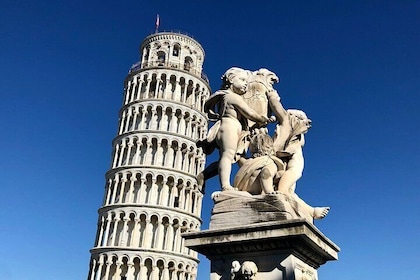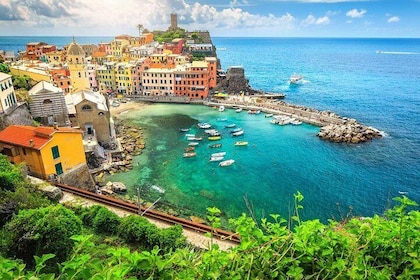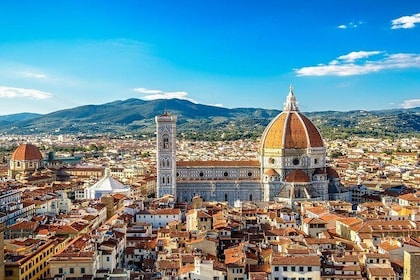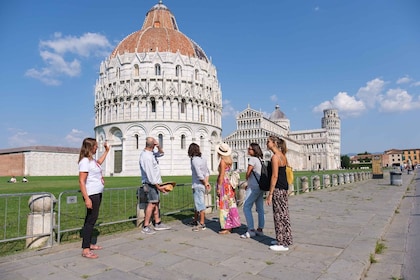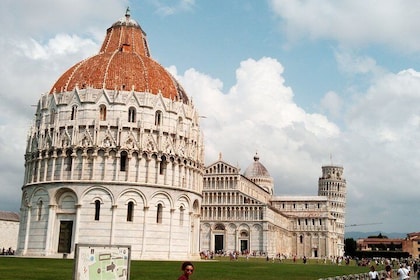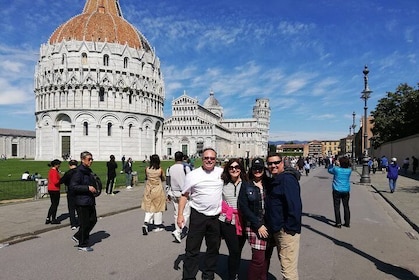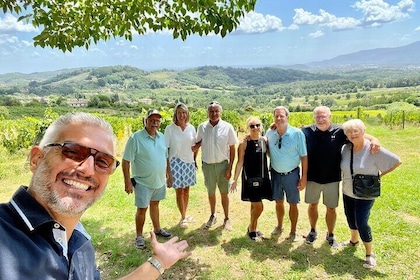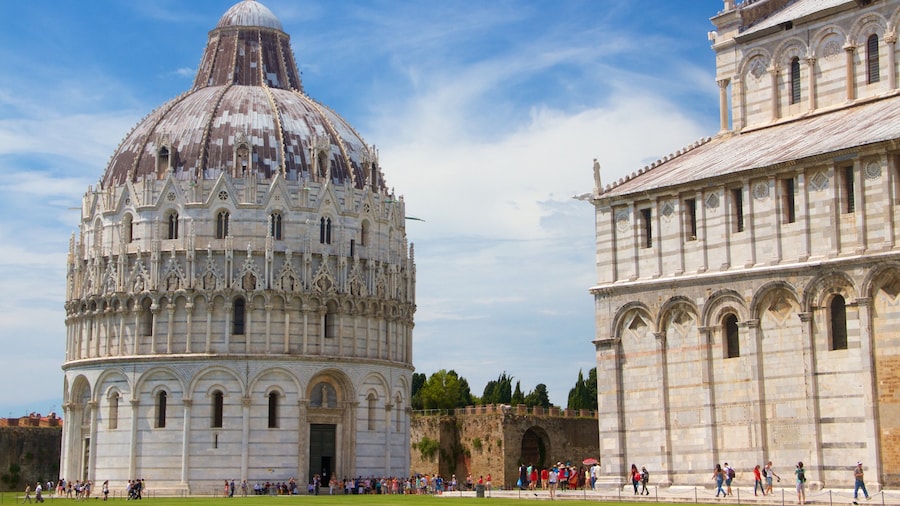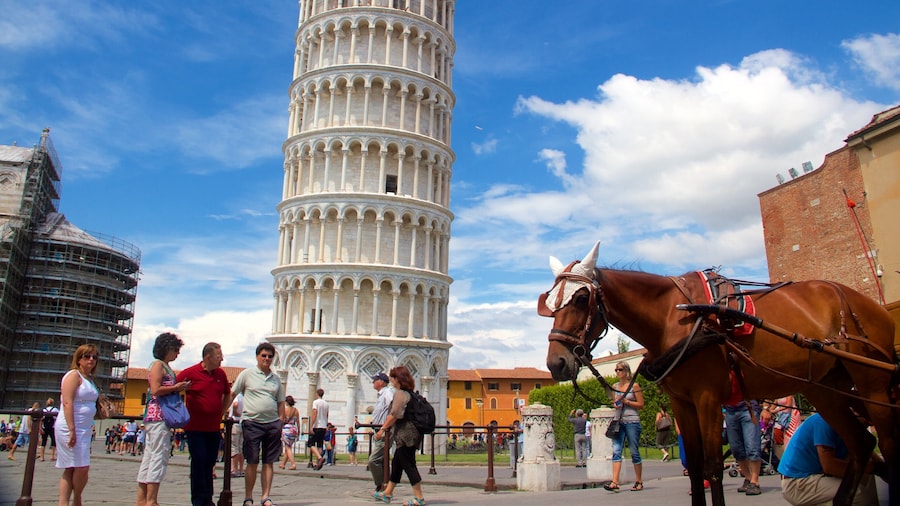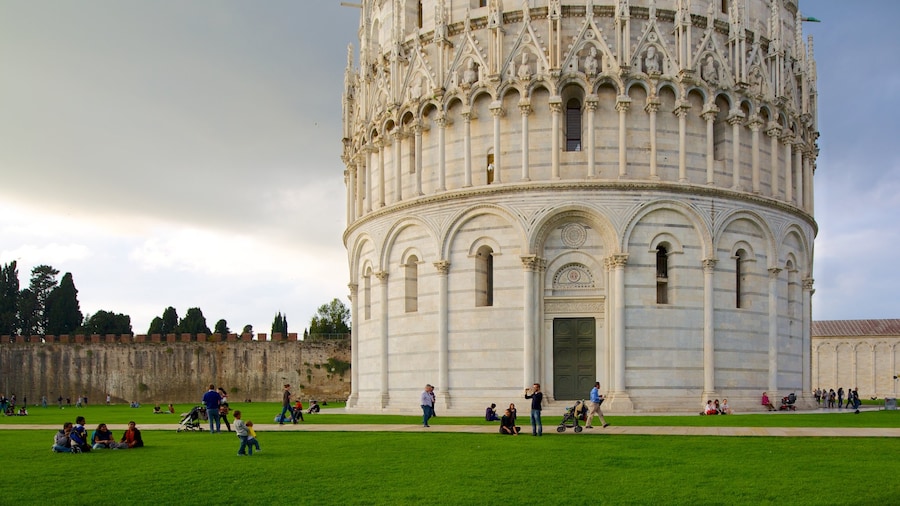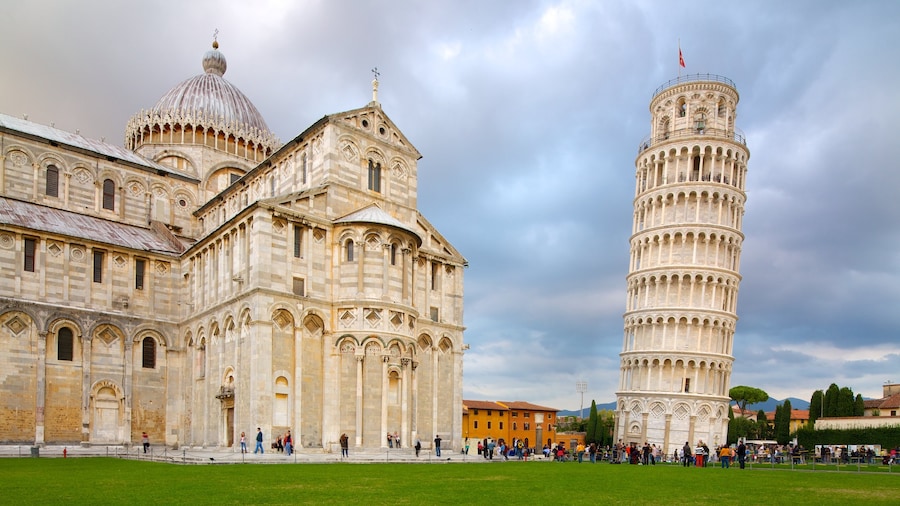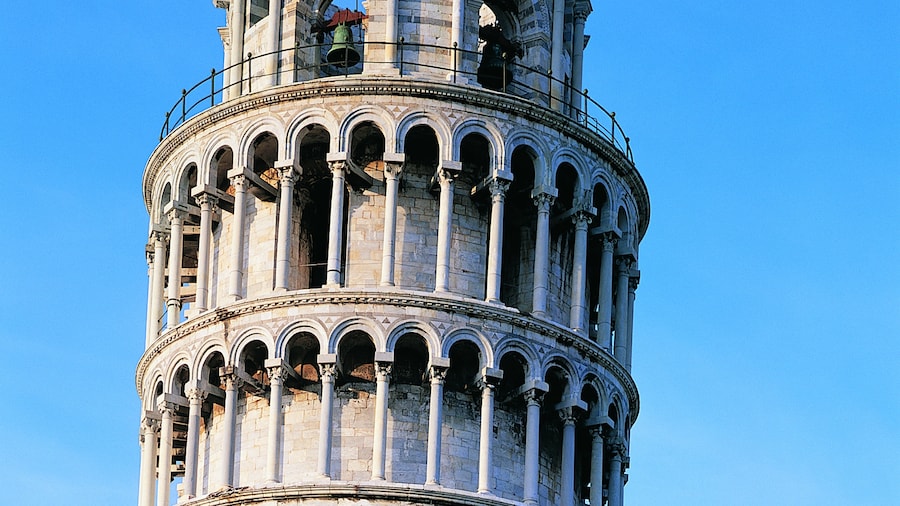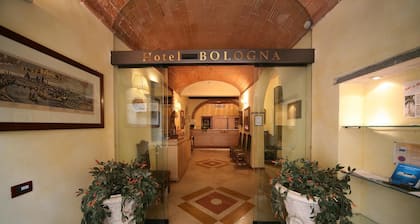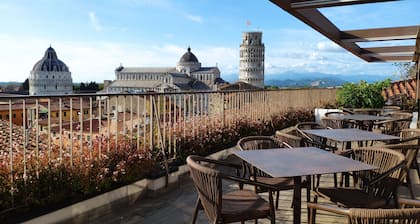The arch-lined walls of the Camposanto form the northern border of the Piazza dei Miracoli, which contains the Duomo and its freestanding Leaning Tower of Pisa. The grassy inner courtyard of the cemetery provides a tranquil escape from the crowds and vendors on the square. Explore its Gothic cloisters and you’ll come across huge frescoes, ancient Roman sarcophagi and the final resting place of many notable Pisans.
It is said that Camposanto, which translates to “holy field,” was built on soil excavated and shipped from the site of Jesus Christ’s crucifixion, but this hasn’t been confirmed by historians. Construction of Camposanto was completed in 1464. This makes it the youngest of the four structures on the square, though its 84 Roman sarcophagi date as far back as the 3rd century.
Follow the cavernous hallways that lead through the interior of the cemetery to reach the northern gallery. While the American bombing of Pisa in 1944 destroyed many of the bigger frescoes in Camposanto, the pieces housed in this room were among the first to be restored after World War II. See moving depictions of the Triumph of Death and scenes depicting the stories of the Anchorites alongside a disturbing vision of the Last Judgement. Find the Roman sarcophagi within the galleries that line the cemetery.
Move between the tombs, gravestones and memorial plaques as the sun forms eerie shadows on the paths. Study the names marked on the plots to come across some notable Pisans buried in this “holy soil,” including the great mathematician Fibonacci. It’s easy to spend a few hours at Camposanto due to the serenity within its walls.
Camposanto is located on the northern edge of Piazza dei Miracoli and can be reached on foot from Pisa’s historic center. A bus services the piazza. Parking is available for a fee on Via Pietrasantina, a five-minute walk away. Camposanto is open daily. There is an admission fee, with a discount available if you buy a multi-attraction ticket to see the other monuments in the square.
